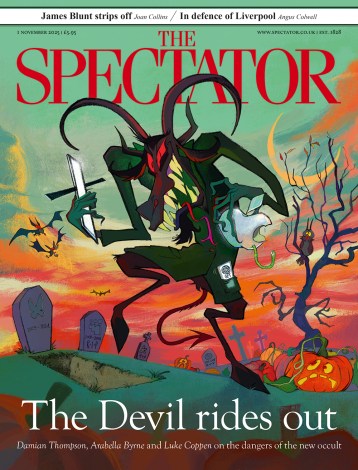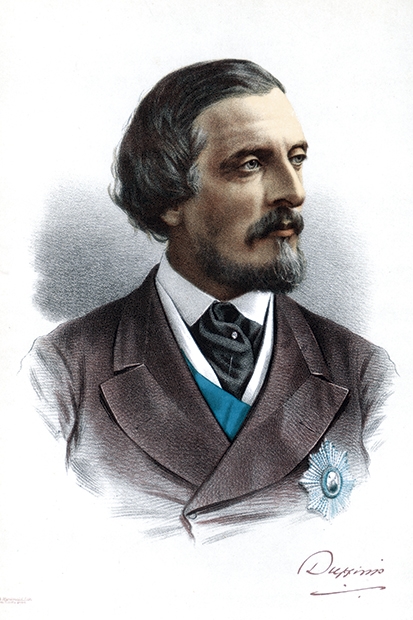The first Marquess of Dufferin and Ava is largely forgotten today — rotten luck for the great diplomat of the Victorian age. In the second half of the 19th century, Dufferin zoomed around the empire, hoovering up the sweetest plums in the diplomatic service: Governor-General of Canada, ambassador to the courts of Russia, Turkey and Italy, ambassador to France, Viceroy of India.
Why did Queen Victoria’s proconsul slip into oblivion? Andrew Gailey, the Vice-Provost of Eton — until now best known as housemaster to Princes William and Harry — answers the question, telling not just Dufferin’s sad, dazzling story but the story of the empire at its high point, before the fall.
Practically all the good fairies gathered for Dufferin’s birth in 1826. The son of an Anglo-Irish peer, he was heir to a chunk of County Down, between Belfast and Bangor. Throughout his life, his path was scattered with stardust; by accident and design he was the Zelig of the empire.
In Omaha, he met Sitting Bull — ‘only one eye and nose of brilliant hue’. Dufferin travelled eight hours through a frozen Pomerania to meet Bismarck, only to find the German Chancellor in his dressing gown, with a nasty bout of indigestion. At the height of the Risorgimento, Dufferin was sailing off the Strait of Messina when he glimpsed Garibaldi’s redshirts bivouacking on the shingle in the boiling heat. Putting ashore, he bumped into Alexandre Dumas — accompanied by an 18-year-old girl in boy’s clothing and 30,000 rifles he wanted to flog to Garibaldi.
There was something of the showman to Dufferin, with his goatee beard and outlandish clothes, his teetering pile of jobs and decorations and his expansive charm. When he retired, a Punch cartoon showed him on stage taking a final curtain call, with the caption, ‘The well-graced actor’.
Gailey’s thesis — that Dufferin studiously crafted his own myth and an early form of celebrity — is convincing. Dufferin confessed to taking great care over his speeches, pitching them, Tony Blair-like, at ‘two and sometimes three audiences, like the circus riders who have to stand on the backs of several galloping horses at once’.
As with many showmen, beneath the ambition and the success ran a streak of insecurity. Dufferin craved popularity and romantic grandeur. He carved an Ulster Camelot out of his estate, creating a family burial ground, the Campo Santo, with cypresses planted around an enormous Celtic cross. On top of a neighbouring hill, he erected a Gothic fantasy of a tower in honour of his beloved mother, Helen Sheridan, a poet who expected so much of him and drove him towards the glittering prizes. Tennyson, no less, wrote the verse inscribed in brass on the tower’s walls:
Helen’s Tower, here I stand,
Dominant over sea and land.
Son’s love built me and I hold
Mother’s love in letter’d gold.
Dufferin’s insecurity meant he didn’t entirely delight in the reputation of his mother’s grandfather — rackety, brilliant Richard Brinsley Sheridan. He tried to airbrush Sheridan’s morals, claiming his forebear’s ‘writings were never tainted by the slightest breath of impropriety or indiscreet or immodest allusion’. An extraordinary thing to say of the author of A School for Scandal and The Rivals.
Clever critics could see into Dufferin’s insecure core, not least Rudyard Kipling, who mocked him in ‘One Viceroy Resigns’:
I followed Power to the last,
Gave her my best, and Power followed Me…
For all his best efforts, power deserted Dufferin; spectacularly so. He became chairman of a mining company run by Whitaker Wright, an inveterate fraudster — not that Dufferin knew of any deception until the company crashed in 1900, wiping out his fortune.
In this tale — told so well — Gailey is alive to Dufferin’s desperation to match his mother’s expectations; to the showy inventions which grew into a public persona he couldn’t control. But Gailey also shows how unjust Dufferin’s fate was. His diplomatic instincts were largely correct. He boosted Canadian loyalty to the empire, restored Anglo-Russian relations after the Congress of Berlin and made a peaceful settlement in Lebanon. In India, he built the foundations of representative government via the reform of the provincial councils 60 years before independence.
His reputation was eclipsed by the financial scandal, the end of empire and the flashy, headline-grabbing Viceroy, Lord Curzon. And by the war that, 12 years after Dufferin’s death in 1902, smashed and rearranged the world he had once roamed so triumphantly, gathering all those honours.






Comments